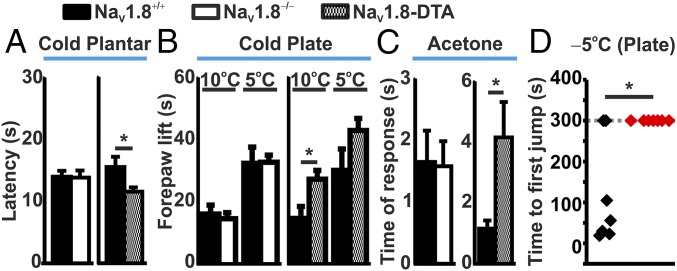Fig. 4.
Cold-sensitivity assessment of WT, NaV1.8-null, and NaV1.8-DTA mice. (A) Paw-withdrawal latency of WT (n = 6), NaV1.8−/− (n = 6), and NaV1.8-DTA (n = 6) mice in response to the cold-plantar test. (B) Cold-plate assessment at 10 and 5 °C of WT (n = 6), NaV1.8−/− (n = 6), and NaV1.8-DTA (n = 6) mice. Activity was measured as the total time of forepaw lifts over the test duration. (C) Acetone response from WT (n = 6), NaV1.8−/− (n = 6), and NaV1.8-DTA (n = 6) mice. (D) Time to first jump following placement onto a −5 °C cold plate for WT (black; n = 7) and NaV1.8Cre/Cre null (red; n = 7) mice. A cutoff time of 300 s was used to limit tissue damage. *P < 0.05; Student’s t test.

